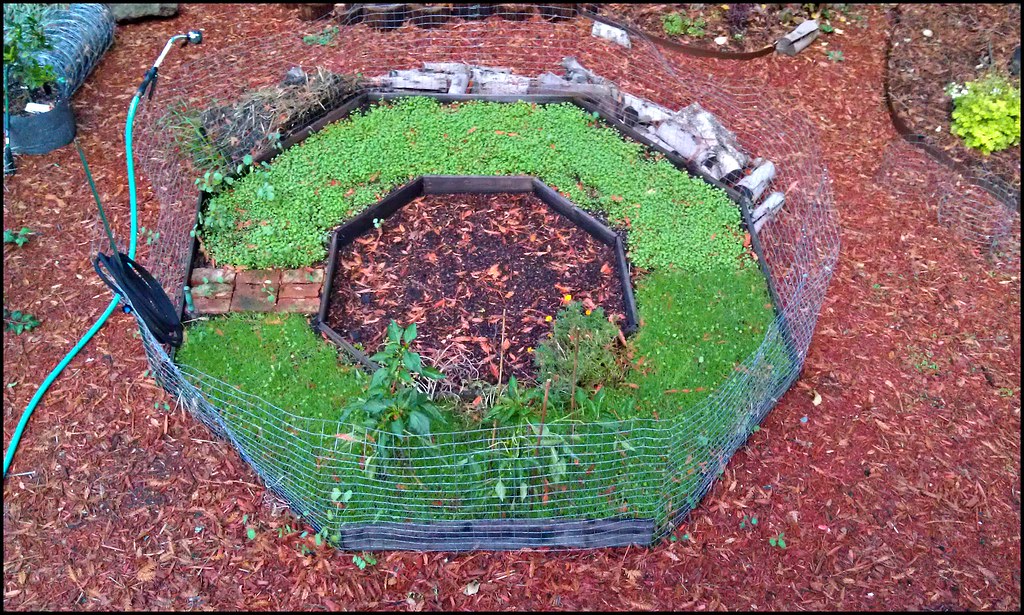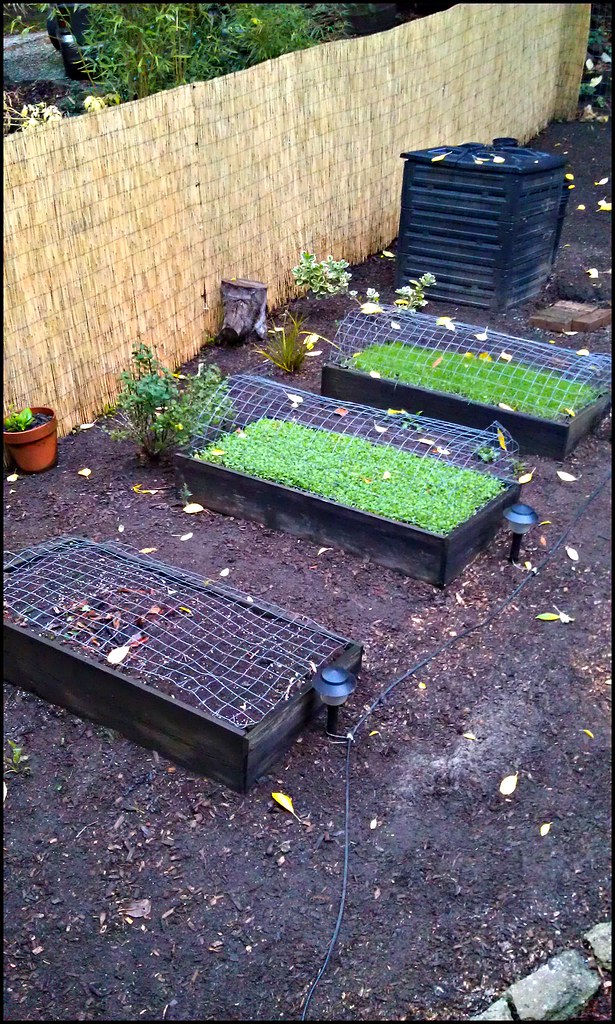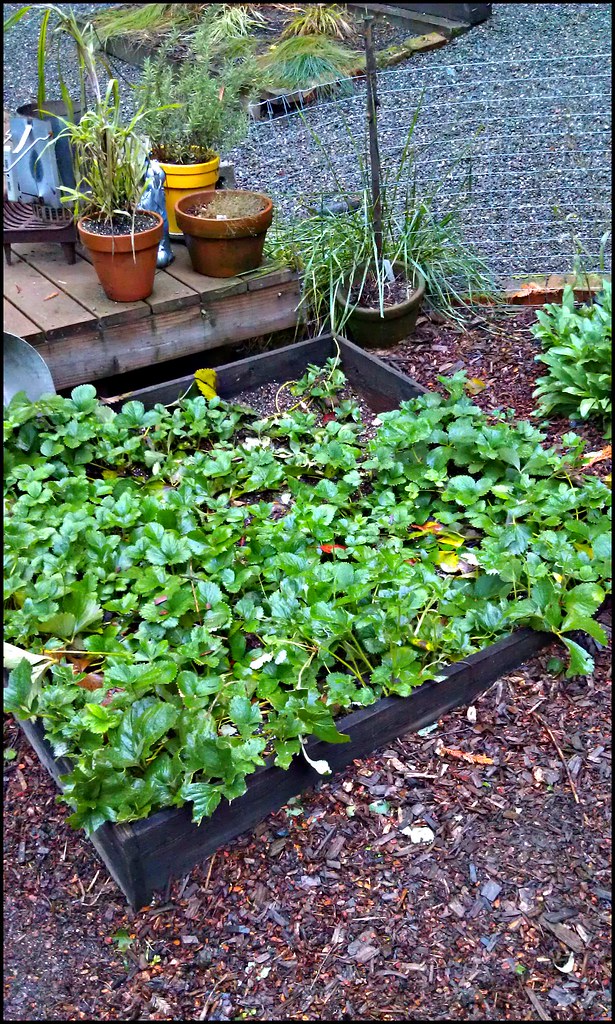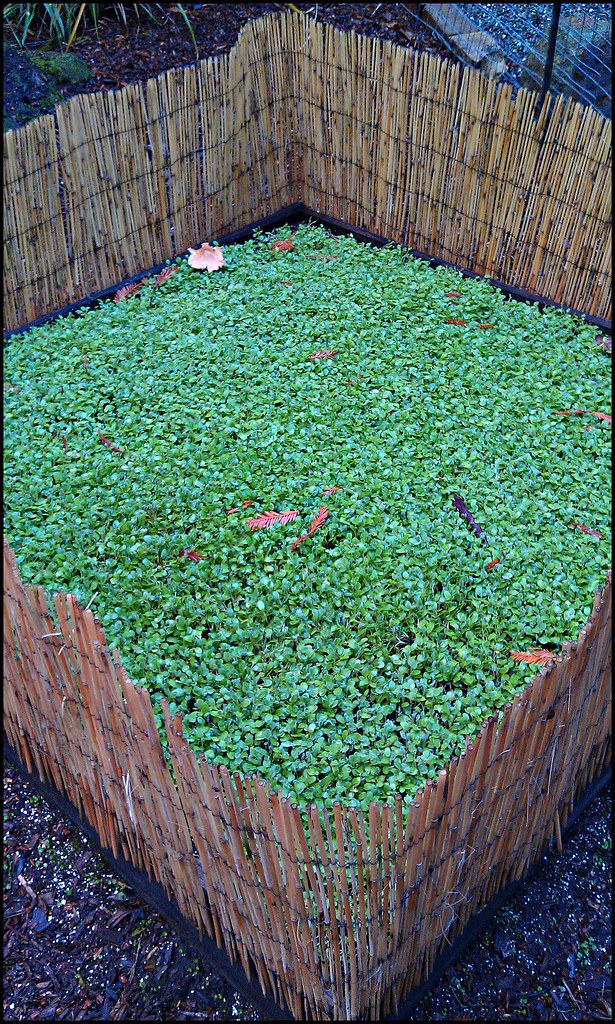But then, I kept seeing cover crops being mentioned on the absurd number of homesteading blogs I read, and then I noticed that my local feed store carried a multitude of cover crops in bulk, and then I learned that cover crops will probably grow even in limited, dappled, lame sunlight and that they will replenish my beloved raised beds with tasty nitrogen and organic matter with relatively little work on my part. Ding ding ding ding!
So, I seeded a bunch of my beds on October 16, and holy smokes, that shit took off like Snyder's hound!
 |
| The Octagarden agrees that cover crops rule. |
I bought two different cover crops to start out with. I used red clover on the top half and a clover/rye mix on the bottom of the front yard Octagarden. My pepper plants are actually still trying to put out some bell peppers. In November. And whoda thunk that nasturtiums would reseed themselves after my brutal mass extermination in mid-October, but I will take whatever I can get considering my slacker gardening conditions.
Now I'm a little disappointed because as you can see, the clover is clearly not red. I surmise that my limited sunlight might be hampering the redness, but it's still nice to have greenery instead of wilted, dying, unkempt summer crops littering my beds.
 |
| Clover in the middle and clover/rye mix in the back. Stampeded and buried tomatoes in the front. |
In the back yard, which gets even less sun than the front yard, the clover and clover/rye mixes are happily growing away. I invented my own experiment for the front bed: it was overrun with volunteer tomatoes (from last year) that I never staked properly so the fruit was just rotting away. I ripped those motherfuckers out, smashed them down into the bed, fruit and all, and buried them with a heavy layer of used peat moss I had lying around. I'll either get a shitload of more volunteer tomatoes next year (that I promise to provide support for) or the whole thing will turn into a rotting, disgusting mess that I will forget about and unknowingly stick my hand into come spring. Fingers crossed for Option 1.
Now forgive the ugly bare dirt surrounding the above beds. I had this covered in bark mulch up until yesterday but then had the bright idea to shovel it all into the chicken run and grow grass in this space instead. Since I know now that I can grow rye here, I want this area seeded in grass. Because I need more maintenance and yard work to do. Smart.
 |
| Strawberries clearly grow without sun. |
Strawberries are not a cover crop, but because they provide me with greenery year round and they remind me of a cover crop, they deserve a mention. The strawberry bed will hopefully yield us some fruit next year. I painstakingly plucked every last fruit at the first sign of it this year because I read somewhere that you'll get much better yields the following year if you keep your strawberry plants in a phase of vegetative growth the first year. Also, note that strawberries do not like being confined to garden beds. Kept trying to sneak its way out all summer with a little tendril here, another one there. strawberries are sly like that
 |
| Happy clover everywhere. |
I'm not really looking forward to ripping out all the cover crops and letting them rot into the soil because that will mess with my sense of organization and garden feng shui. However, I am interested to see how many times I can reseed these beds over the course of the remaining fall and into winter. I see myself going a little bat crazy in the bulk cover crop aisle at Mountain Feed soon.

No comments:
Post a Comment